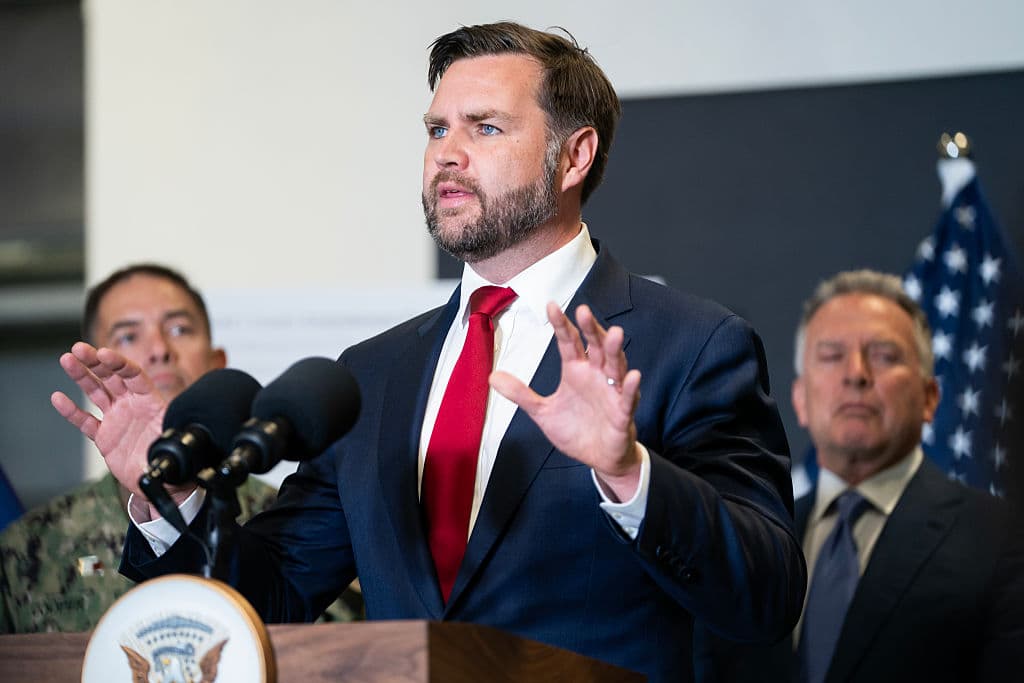Hamas’s Quick Regrouping in Gaza Seen as Immediate Threat That Could Unravel the Fragile Peace
With Vice President JD Vance acting upbeat about the progress of the 20-point Gaza plan even as unease is growing among Israelis, a question is raised: Is the American vision disconnected from Middle East realities?

Vice President JD Vance, during a visit to Israel, is acting upbeat about the progress of the 20-point Gaza plan even as unease is growing among Israelis, raising a question: Is the American vision disconnected from Middle East realities?
Addressing reporters at an American military facility at Kiryat Gat in southern Israel, Mr. Vance assailed “weird attitudes” in the press about highlighting setbacks to the cease-fire. “It’s not the end, it is, in fact, exactly how this is going to have to happen,” he said. “We are in a very good place.”
The success of the Gaza plan will go beyond Gaza, the vice president said, as former foes could make peace with the Jewish state. “We know that a lot of our Gulf Arab friends would like to have normalized relations with Israel,” Mr. Vance said.
Prime Minister Benjamin Netanyahu is also hinting at future agreements with countries like Indonesia or Saudi Arabia. Yet, Israelis increasingly see Hamas’s quick regrouping in Gaza as an immediate threat that could unravel the fragile peace. They point, for one, to the involvement of Hamas-backing Turkey and Qatar in Gaza.
The Trump plan involves “too many power centers, and too much internationalization,” a professor at Achva College in Israel, Doron Matza, tells the Sun. “There is even a plan for a United Nations Security Council resolution that will establish a Gaza stabilizing force. I’m not sure if any of this agrees with the Israeli vision.”
A former senior member of Israel’s General Security Service, Shabak, Mr. Matza points to a major difference between the American and Israeli approaches to ending the war. He compares it to the debate at Washington at the end of World War II. Israel’s ideas, he says, are like Secretary Henry Morgenthau’s plan to leave Germany in ruins, making it an agrarian country that could never threaten the world again.
Instead, America opted for the Marshall Plan that rebuilt Germany and turned it into an allied flourishing democracy. Likewise, Washington is now promoting a Gaza plan premised on economic benefits. Yet, unlike Germans of the last century, more Mideasterners are motivated by ideology, religion, honor, and revenge than future prosperity.
American and Israeli sensibilities are “like two train tracks that progress in parallel lines,” Mr. Matza says. Washington, as Mr. Vance puts it, envisions a future in which “both the Palestinians living in Gaza, but also the Israelis, are able to live in some measure of security and stability.” Israel is concerned about the immediate prospect of leaving Hamas as the dominant power in Gaza.
Hamas has appointed half of the “technocrats” who would initially rule Gaza according to Mr. Trump’s plan, Israel’s Kann News reported Tuesday. That list of interim government candidates was blindly approved by Egyptian, Qatari, Turks, and other Arab mediators that are negotiating Mr. Trump’s plan.
Mr. Vance said that Israel would need to approve such lists. Yet, even now “almost everything that happens in Gaza, Hamas has a hand in it in one way or the other,” the editor of the Foundation for Defense of Democracies’s Long War Journal, Joe Truzman, tells the Sun. That’s true “even, in this case, choosing these technocrats, trying to establish some administrative government.”
Mr. Vance said that the Strip’s reconstruction would occur only where Hamas is not present. Washington, though, is pressuring Jerusalem to moderate its response to Hamas violations in Gaza’s “yellow line,” which is controlled by Israeli troops.
Hamas agreed to release all hostages, dead or alive, in the initial 72 hours of the cease-fire. Yet, a week later bodies of deceased hostages are slow to arrive, and now Mr. Vance says that “some of these hostages are buried under thousands of pounds of rubble,” and might take a long time to find.
As for disarming the terrorists, “there is still hope that Hamas will do what is right,” Mr. Trump wrote on Truth Social Tuesday. “If they do not, an end to Hamas will be fast, furious & brutal!”
Yet, “when Hamas responded to Trump’s peace plan, they didn’t answer the question about laying down arms,” Mr. Truzman notes. Arab and Muslim countries that plan to join a multinational force in Gaza are showing little enthusiasm about confronting Hamas, and Israel might also find it difficult to return to full-blown fighting. “It’s not like you can flip a switch and you’re back,” Mr. Matza says.
For now, keeping the cease-fire intact seems to be more important for all sides than fulfilling the agreements that allowed it — to Hamas’s advantage.

